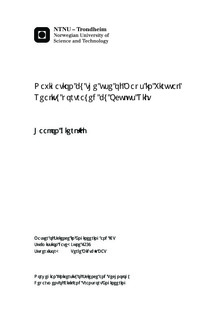Navigation by the use of Maps in Virtual Reality portrayed by Oculus Rift
Master thesis
Permanent lenke
http://hdl.handle.net/11250/233165Utgivelsesdato
2014Metadata
Vis full innførselSamlinger
Sammendrag
With the introduction of the Oculus Rift in 2012, it was predicted to become the new technological device that would change future entertainment. Being affordable and developer friendly, many applications and games with Oculus Rift support have been created the last two years. Creative uses of the Oculus Rift s technology have shown just the tip of the iceberg regarding its capabilities.As the Oculus Rift was mainly created for gaming, it excels when used in first-person view. This thesis considers the possibilities to view maps in new ways while navigating in a 3D virtual reality environment. Previous studies regarding stereoscopic vision, head tracking and interface design are discussed, as well as current applications for the Oculus Rift. These studies are used to consider new methods to improve immersion and usability when viewing a map in a 3D virtual reality environment. In addition, a program was made in UDK (Unreal Development Kit) to test implementation of the methods.The results consist of different techniques and methods. These are available for developers to create and improve map reading in a 3D environment, while using the Oculus Rift. Their usefulness is discussed, as well as customization and implementation techniques. It is concluded that all methods have the potential to improve map reading. They can theoretically be implemented, but certain limitations in UDK require advanced understanding of the Oculus Rift to be able to create some of them.Keywords: Oculus Rift, virtual reality, map-display methods, 3D, stereoscopy, UDK
